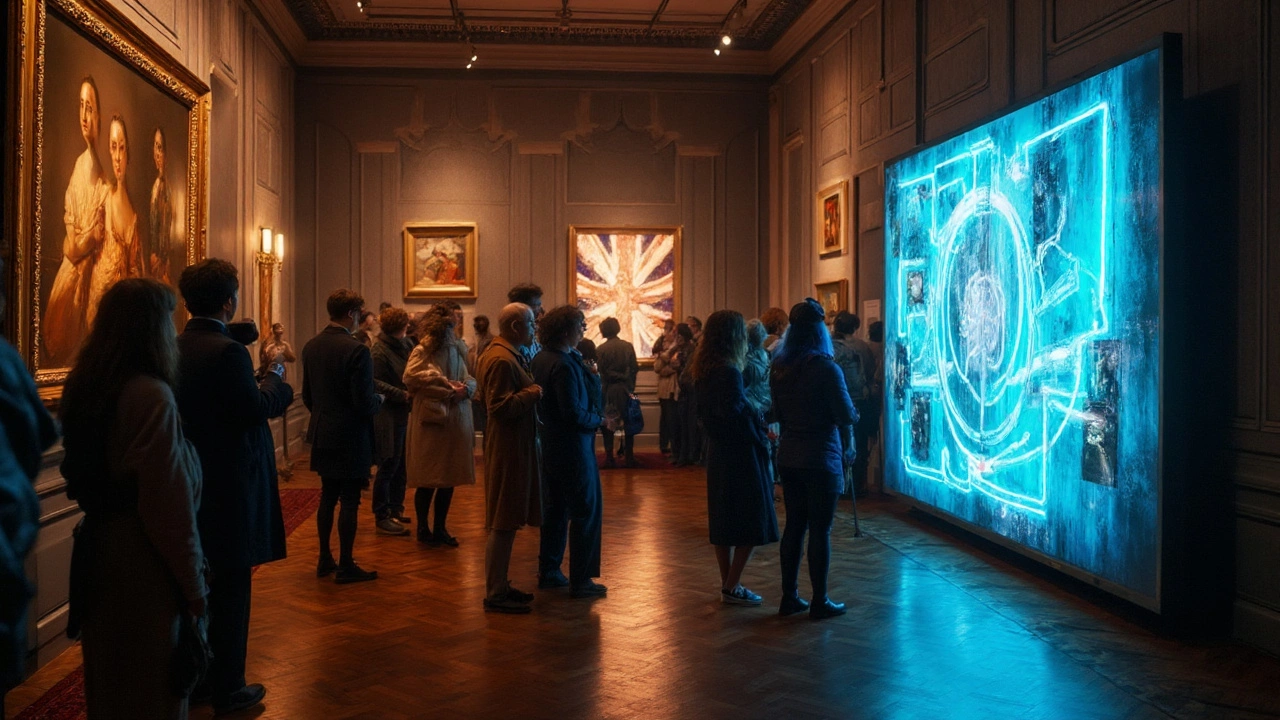Fine Art vs Contemporary Art Quiz
1. Which period is typically associated with fine art?
2. What medium is most common in contemporary art?
3. Where are fine‑art works most often displayed?
4. According to collectors, what is the primary focus when buying fine art?
5. Which statement best describes contemporary art criticism?
TL;DR
- Fine art focuses on aesthetic mastery and traditional techniques; contemporary art embraces concept, new media and current issues.
- Fine art stems from centuries‑old movements; contemporary art grew out of modern art after the 1970s.
- Typical venues differ: fine art favors museums, contemporary art thrives in galleries and alternative spaces.
- Market dynamics vary - fine art attracts collectors seeking heritage pieces, while contemporary art draws investors looking for emerging talent.
- Both overlap, but their intent, context and execution set them apart.
Fine art is a category of visual art that prioritises aesthetic quality, technical skill and timeless themes, historically encompassing painting, sculpture, drawing and printmaking. It emerged from the Renaissance notion of "art for art's sake" and has been the benchmark for museum collections worldwide.
Contemporary art is a broad term for art created after roughly 1970, characterised by experimental media, conceptual focus and engagement with current social, political and technological issues. It includes installation, digital, performance and street art, reflecting the fluid boundaries of today’s visual culture.
Historical Roots and Evolution
The split between fine and contemporary art can be traced through Art history. Modern art, which began in the late 19th century, challenged academic standards and set the stage for the radical experiments of the 20th century. Movements such as Abstract art broke away from representational forms, paving the way for the conceptual mindset that defines contemporary practice.
Mediums, Techniques and Materials
Traditional fine art leans heavily on oil paint, marble, bronze and canvas - mediums honed over centuries. Artists like Rembrandt or Michelangelo exemplify the mastery of these materials. In contrast, contemporary art expands the palette to include Digital art, video, found objects and bio‑materials. Think of a multimedia installation that incorporates projected light, sound and interactive code - a far cry from the solitary studio of a classical painter.
Where the Work Is Shown
Museums have long been the custodians of fine art, presenting works in chronological narratives that emphasise preservation. Galleries, especially those focused on contemporary programming, favour flexible, experimental spaces that can accommodate large installations, performance pieces or virtual reality setups. The venue choice often signals the work’s intended audience and market positioning.

Market Dynamics and Collectors
The Art market treats fine and contemporary art differently. Fine art collectors typically seek provenance, rarity and a proven track record - a 17th‑century Dutch still‑life, for example, can command millions at auction. Contemporary collectors may prioritize the artist’s current relevance, critical buzz, and potential for future appreciation. Auction houses have created separate sales events: "Old Masters" versus "Contemporary" to cater to these divergent priorities.
Critical Approaches and Interpretation
Art criticism of fine art often focuses on composition, technique and historical context. Reviews of a Renaissance portrait will dissect chiaroscuro, perspective and iconography. For contemporary art, critics engage with concept, cultural commentary and the work’s relationship to technology or activism. A Damien Hirst shark in formaldehyde, for instance, is discussed less for its material qualities and more for its statements on mortality and commodification.
| Attribute | Fine art | Contemporary art |
|---|---|---|
| Typical period | Pre‑1970, often historic | Post‑1970, current |
| Core medium | Oil paint, marble, bronze, canvas | Installation, video, digital, performance |
| Primary venues | Museums, classic galleries | Contemporary galleries, alternative spaces, online platforms |
| Collector focus | Provenance, rarity, historical significance | Conceptual relevance, artist reputation, market momentum |
| Critical lens | Formal analysis, technique, art‑historical context | Concept, socio‑political commentary, interdisciplinary links |
Overlap and Blurred Boundaries
Modern practice shows that the line isn’t always clear. Some artists employ classical techniques to comment on contemporary issues - think of a hyper‑realistic portrait that uses oil paint to critique social media culture. Conversely, contemporary artists may adopt traditional mediums but subvert them with new ideas, creating works that sit comfortably in both museum and gallery contexts. This fluidity keeps the conversation alive and prevents the categories from becoming static.
Related Concepts and Next Steps
Understanding the difference between fine and contemporary art opens doors to several adjacent topics: the role of Conceptual art in the 1960s, the rise of Installation art as a dominant contemporary form, and the impact of Digital art on museum acquisition policies. Readers curious about the commercial side might explore "How to start an art collection" or "Understanding auction house grading". For deeper historical insight, a dive into "Baroque versus Post‑Modern aesthetics" would be a logical next step.

Frequently Asked Questions
What is the main distinction between fine art and contemporary art?
Fine art emphasizes traditional techniques, aesthetic mastery and historical continuity, while contemporary art prioritises concept, experimentation with new media, and engagement with present‑day issues.
Can a work be both fine art and contemporary art?
Yes. An artist may use classic oil‑painting methods to explore a current social theme, placing the piece in museum collections (fine art) while also being exhibited in cutting‑edge galleries (contemporary).
Which venues typically showcase fine art versus contemporary art?
Fine art is most often displayed in museums and historic galleries that preserve chronological narratives. Contemporary art tends to appear in purpose‑built galleries, art fairs, pop‑up spaces, and increasingly on virtual platforms.
How do market values differ between the two categories?
Fine art values are anchored in provenance and rarity; a work by a master can appreciate steadily over centuries. Contemporary art values are more volatile, often driven by trends, critical hype and the artist’s future potential.
What role does technology play in contemporary art?
Technology is central - from video installations and VR experiences to AI‑generated pieces. It expands the definition of "medium" and invites viewers to interact, not just observe.
Is contemporary art less valuable because it’s newer?
Not necessarily. While many contemporary works are priced lower initially, some achieve record‑breaking sales quickly, especially if the artist gains critical acclaim or cultural relevance.
How should a new collector approach buying fine vs contemporary art?
Start with provenance and condition when considering fine art. For contemporary pieces, focus on the artist’s exhibition history, critical reception, and the work’s alignment with current cultural conversations.

